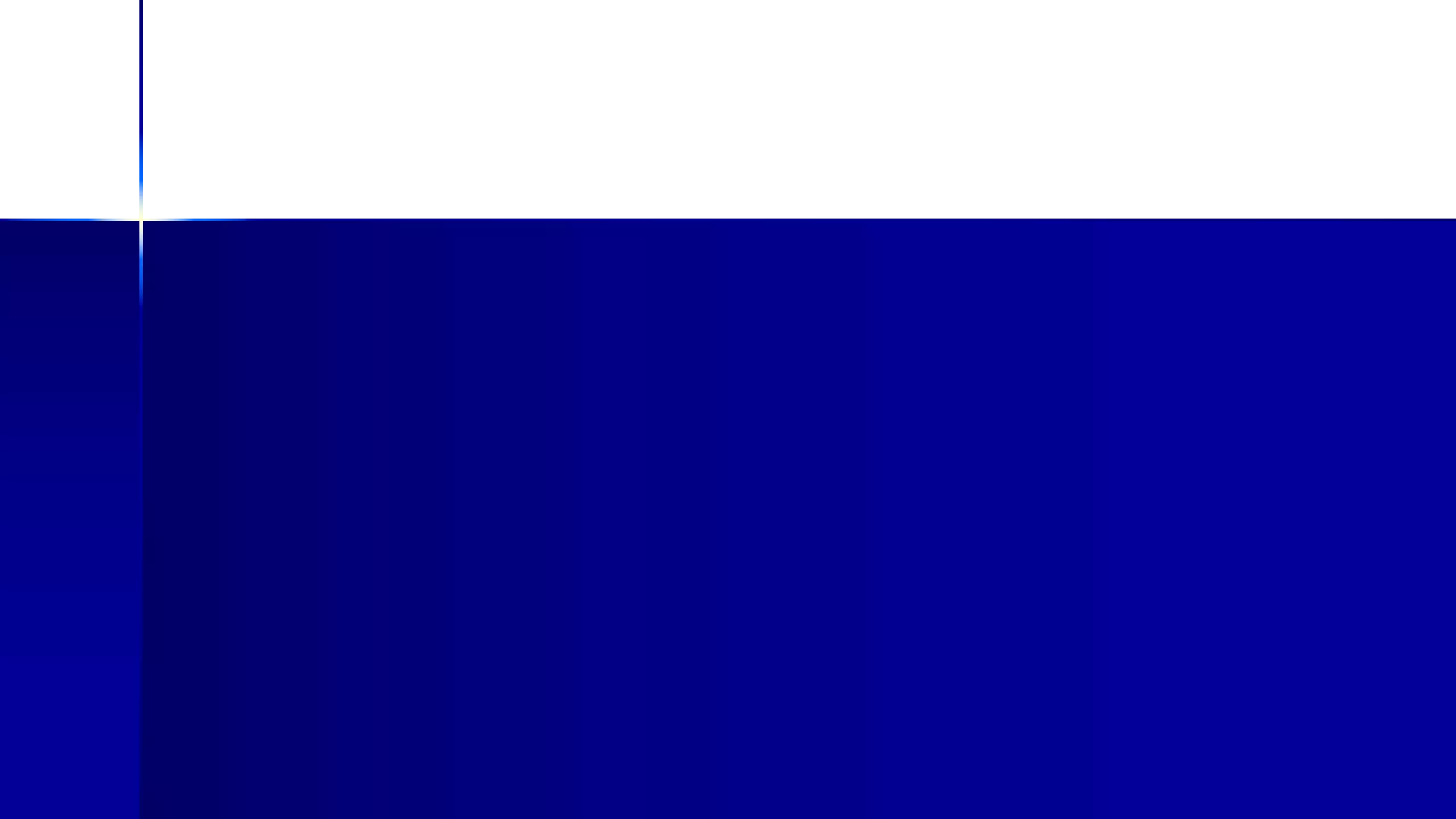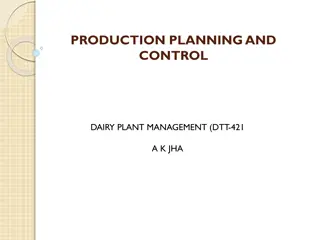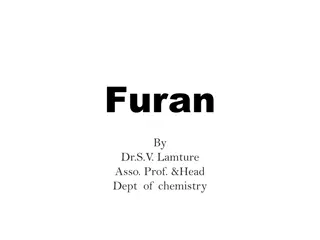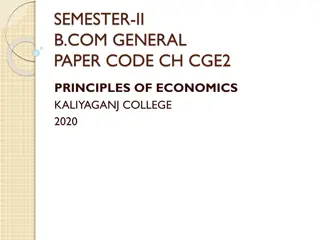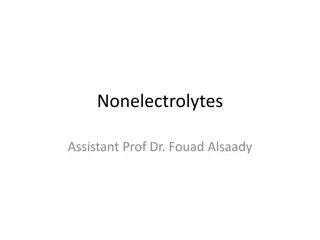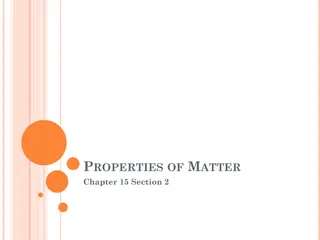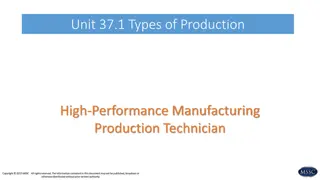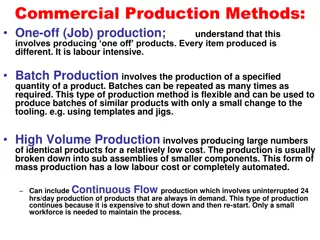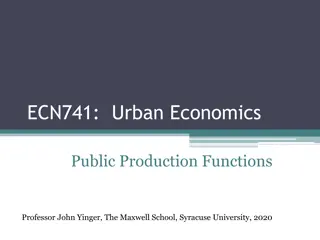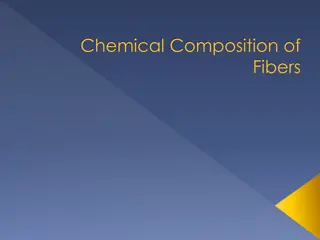Overview of Rayon: Production, Properties, and Applications
Rayon, the first man-made fiber commercially produced, is a regenerated cellulosic material manufactured from wood pulp or cotton waste. Viscose rayon, the most common type, is produced through processes like the viscose method. Additives such as titanium dioxide, sodium sulfate, zinc sulfate, and glucose are used in production to influence fiber characteristics. Modifications in the spinning bath can alter the physical properties of rayon, leading to the production of varied forms like high-wet-modulus rayons.
Download Presentation

Please find below an Image/Link to download the presentation.
The content on the website is provided AS IS for your information and personal use only. It may not be sold, licensed, or shared on other websites without obtaining consent from the author. Download presentation by click this link. If you encounter any issues during the download, it is possible that the publisher has removed the file from their server.
E N D
Presentation Transcript
RAYON Rayon was the first man-made fiber to be produced commercially, and several types of rayon fibers are produced. Rayon is regenerated cellulosic material produced by solution of a cellulose source (wood pulp, cotton waste, etc.), followed by forcing of the solution through a spinneret and subsequent regeneration to form the fiber. The Federal Trade Commission defines rayon as a manufactured fiber composed of regenerated cellulose in which substituents have not replaced more than 15% of the hydroxyl hydrogens. Rayon is produced by three methods to give the viscose rayons, cuprammonium rayon, and saponified cellulose acetate. Of these, viscose rayon is the most important and the most inexpensive to produce.
Structural Properties and Formation of Rayon Viscose rayon fibers are produced by the viscose process, which involves formation of soda cellulose, reaction with carbon disulfide to form cellulose xanthate, and spinning into dilute acid to regenerate the cellulose as rayon fiber. In practice the cellulose pulp is steeped in warm concentrated sodium hydroxide and pressed to remove excess sodium hydroxide. After aging, during which some degradation and breaking of cellulose chains occurs, the soda cellulose crumbs are mixed with carbon disulfide, and orange sodium cellulose xanthate is formed. The xanthate is then dissolved in dilute sodium hydroxide.
. At this point titanium dioxide is added to the solution if a delustered fiber is desired. The solution is aged and ripened until a proper viscosity is reached; the solution is then forced through the spinneret into dilute sulfuric acid to decompose the xanthate and regenerate the cellulose by the wet spinning process. In addition to acid, the following additives are often found in the spinningbath: sodium sulfate (15%- 20%), zinc sulfate (1%-5%), and glucose (2%). Initially, the outer portion of the xanthate decomposes in the acid bath and a cellulose skin forms on the fiber.
The sodium and zinc sulfates affect the rate of xanthate decomposition and fiber formation, while the action of zinc sulfate is confined to crosslinking the outermost portion of the fiber. The glucose tends to slow the rate of regeneration of the fiber and tends to make the fiber more pliable. The concentration and type of additives in the bath and the nature of the original cellulose will affect the physical properties of the rayon. By careful control of the coagulation bath followed by mechanical stretching, crimp can be produced in the fiber. Slow regeneration and stretching of the rayon will tend to introduce greater areas of crystallinity within the fiber. High-tenacity rayons are formed in this manner. Also, the fiber can be modified through addition of other crosslinking agents to the spinning bath.
High-wet-modulus rayons (polynosic rayons) have been developed in recent years. These fibers are produced from high-grade cellulose starting materials, and the formation and decomposition of cellulose xanthate is carried out under the mildest of conditions to prevent degradation of the cellulose chains. After initial skin formation, the core of the fiber decomposes, hardens, and shrinks, causing wrinkling on the fiber skin.
The final fiber cross section of viscose rayon appears serrated and irregular, and the nature of the crystallites in the skin and core will differ (Figure 3-4). This skin effect can be controlled sufficiently to give nearly round fiber cross sections where carefully controlled coagulation occurs. Figure 3-4. Viscose rayon. X2000.
The majority of viscose rayons have serrated and irregular cross sections due to the skin effect. The viscose rayon fiber is long and straight unless the fiber has been crimped, and striations due to the irregular cross section will run the length of the fiber. If the fiber has been delustered or spun dyed during fiber formation, particles of pigment will appear in the fiber.
Normal viscose fibers will generally consist of 25% 30% crystalline areas within the fiber, and the average degree of polymerization of glucose units in the cellulose chains will be 200-700. The crystallites in viscose rayon are somewhat smaller than those found in cotton. Higher-tenacity rayons and high-wet- modulus rayons tend to be more crystalline, and higher degrees of polymerization are found. The cross sections of these rayons tend to be more nearly round. The degree of crystallinity of high- wet-modulus rayons can reach 55%.
Cuprammoni urn Rayon: Cuprammoni urn rayon is produced by solution of cellulosic material in cuprammonium hydroxide solution at low temperature under nitrogen, followed by extrusion of the solution through a spinneret into water and then sulfuric acid to decompose the cuprammonium complex and regenerate the cellulose. Cuprammonium rayon is more silk like than any of the other celluloses, but the cost of production is correspondingly higher. Figure 3-5. Cuprammonium rayon. X1100 Cuprammonium rayon has a smooth surface, and no markings or striations are found on the fiber (Figure 3-5). The fiber cross section is nearly round.
Saponified Cellulose Acetate: Rayon can be produced from cellulose acetate yarns by hydrolysis in base, a process called saponification. Cellulose acetate molecules are unable to pack closely within the fiber due to lack of hydrogen bonding and the presence of bulky acetate side chains within the molecule. Since cellulose acetate is more plastic in nature, it can therefore be drawn and extended to give a high degree of orientation to the fiber. On hydrolysis the highly oriented cellulosic chains form hydrogen bonds with adjacent chains to give rayon of high orientation and crystallinity. Saponified cellulose acetate has a nearly round but lobedcross section. The indentations caused by the lobes appear as light striations running the length of the filament.
Physical Properties Since rayons are essentially pure cellulose, they would be expected to have physical properties similar to cellulosic fibers of natural origin. Differences in properties would be expected to depend on the degree of polymerization, crystallinity, and orientation within the fiber. The dry and wet tenacities of the rayons vary over a wide range dependent on the degree of polymerization and crystallinity with tenacities of 2 to 6 g/d(18 to 54 g/tex) dry and 1 to 4 g/d (9 to 36 g/tex) wet.
For the more crystalline and oriented rayons, the drop in tenacity observed on wetting of the fiber is lower; however, none of the rayons exhibit higher wet strength than dry strength, as found with cotton. The great loss in strength of wet regular tenacity rayon makes it subject to damage during laundering. The percentage elongation at break varies from 10 to 30% dry and 15 to 40% wet. The recovery at 2% elongation ranges from 70 to 100%. In general, the rayons have significantly higher elongations at break than observed for cotton.
As the degree of crystallinity and orientation of the rayon increases, the elongation at break is lower. Rayons generally have somewhat better elastic properties at low elongations than is found for cotton. The rayons possess greater luster than cotton, and often delusterants are added to rayon prior to spinning to give a more subdued fiber. Since the rayons are less crystalline and oriented than cotton, they tend to swell more in water and undergo greater elongation under tension in both the wet and dry states.
During weaving and wet finishing considerable stresses can be introduced into many rayon fabrics, and relaxation of these stresses will be necessary before a dimensionally stable fabric is obtained. Owing in part to the more extensive networks of amorphous regions found in rayons, the moisture regain of rayon is significantly higher than that of cotton. The regains of rayons under standard conditions range from 11% to 13%.
The lower crystallinity and degree of polymerization of rayons also affect the way water acts on the fibers. Rayons as a consequence are swollen to varying degrees due to increased susceptibility to water penetration. During wetting rayon may increase up to 5% in length and swell up to double its volume. The heat conductivity and electrical properties are the same as those found for cotton. Rayon is cool to the touch, and static charges do not build up in the fiber at humidities greater than 30%.
Although rayon swells in water, it is not attacked by common organic solvents. It does dissolve in cuprammonium solutions. The rayons are moderately stiff fibers with poor resiliency and wrinkle recovery properties. As in the case of cotton, resin treatments will effectively increase the resiliency of rayon. Often such treatmentswill tend to be more effective on rayon than on cotton due to the greater accessibility of the interior of rayon to the resin. The specific gravities of viscose and cuprammonium rayons are the same as cotton and vary between 1.50 and 1.54. Only saponified cellulose acetate has a markedly different specific gravity (1.30).
Chemical Properties The chemical properties of the rayons are essentially the same as those found for cotton. Cold dilute or concentrated base does not significantly attack rayon, but hot dilute acids will attack rayon at a rate faster than found for cotton. Although generally resistant to oxidizing bleaches, rayon is significantly attacked by hydrogen peroxide in high concentrations. Although silverfish are known to attack rayon, microorganisms which cause mildew do not readily attack rayon, except under more severe hot and moist conditions.
Prolonged exposure of rayon to sunlight causes degradation of the cellulose chains and loss of strength of the fibers. The rayons are not thermoplastic, and they, like cotton, decompose below their melting point. Regular- tenacity rayon begins to decompose and lose strength at 150aC for prolonged periods and decomposes rapidly at 190 -210 C. High-tenacity rayons tend to decompose at slightly higher temperatures.


